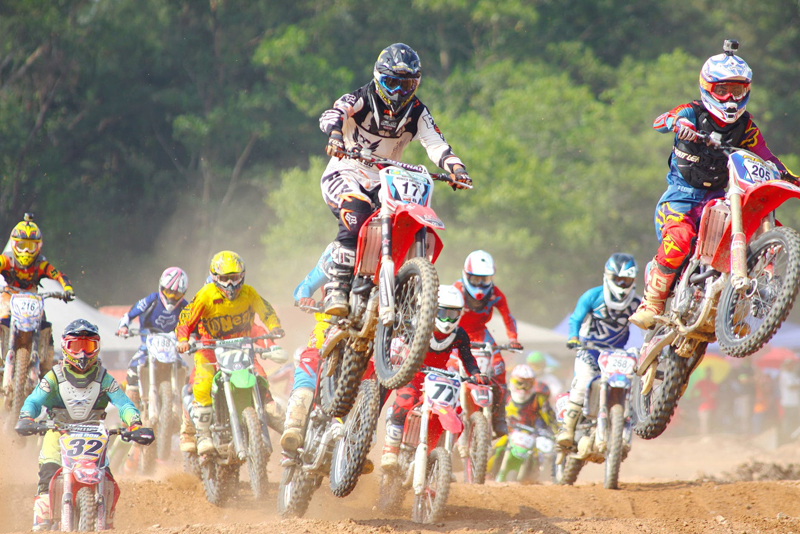Kubica's Crash Shows Safety Improvements

Whilst I don’t want to dwell on what was an awful crash, there’s no denying that if it had happened just ten years ago, Robert Kubica would definitely not have been walking away with a simple sprained ankle. The driver’s are constantly striving for improvements to safety, and whilst it can sometimes seem as though they are whining about what is genuinely a dangerous sport, they have obviously been doing a good job.
First, let’s take a quick look at what actually happened in the crash. Kubica was trying to overtake Jarno Trulli, and hit the back wheel of the car, launching him into the air. He skipped over the grass, just missing an already parked Toro Rosso and marshal. He collided with the wall, which spins him back onto the track, literally in a circle a couple of times. The car rolls across the track, missing several other drivers who are negotiating the scene. Finally, Kubica smashes into the opposite wall and comes to rest on his side. All this at 180 mph.
The most important device to keep Robert Kubica relatively safe was the HANS device (the head and neck device). This basically keeps the driver and his helmet all tucked into the cockpit and safe, instead of letting his neck roll with the car and cause all kinds of problems.
Another noticeable thing about the car was how the area that the driver sits in – known as the tub – was completely intact despite the destruction of the rest of the car. The wheels had come off, and front and rear wings were detached almost immediately. But when Kubica was on his side, he was still safely inside the cockpit, and the cockpit was completely whole.
And of course, the most important area of safety is that the marshals were on the scene within 20 seconds of the crash starting. Luckily Kubica had crashed at the point of the circuit nearest to the medical centre, but even so, you couldn’t ask for a quicker response time than that. The safety car was instantly on track as well, to make sure that Kubica and the marshals was kept safe from the other cars and that they wouldn’t stray off course and cause anymore damage.
The crash has brought up concerns about the plans for more street circuits in the future. If accidents like this happen on a specially designed track, they are more easily controlled and handled. If a track is shoehorned into an existing street circuit, it takes a lot more planning and perhaps some sacrifices to safety. All we can do at the moment is be grateful that Kubica is okay.
First, let’s take a quick look at what actually happened in the crash. Kubica was trying to overtake Jarno Trulli, and hit the back wheel of the car, launching him into the air. He skipped over the grass, just missing an already parked Toro Rosso and marshal. He collided with the wall, which spins him back onto the track, literally in a circle a couple of times. The car rolls across the track, missing several other drivers who are negotiating the scene. Finally, Kubica smashes into the opposite wall and comes to rest on his side. All this at 180 mph.
The most important device to keep Robert Kubica relatively safe was the HANS device (the head and neck device). This basically keeps the driver and his helmet all tucked into the cockpit and safe, instead of letting his neck roll with the car and cause all kinds of problems.
Another noticeable thing about the car was how the area that the driver sits in – known as the tub – was completely intact despite the destruction of the rest of the car. The wheels had come off, and front and rear wings were detached almost immediately. But when Kubica was on his side, he was still safely inside the cockpit, and the cockpit was completely whole.
And of course, the most important area of safety is that the marshals were on the scene within 20 seconds of the crash starting. Luckily Kubica had crashed at the point of the circuit nearest to the medical centre, but even so, you couldn’t ask for a quicker response time than that. The safety car was instantly on track as well, to make sure that Kubica and the marshals was kept safe from the other cars and that they wouldn’t stray off course and cause anymore damage.
The crash has brought up concerns about the plans for more street circuits in the future. If accidents like this happen on a specially designed track, they are more easily controlled and handled. If a track is shoehorned into an existing street circuit, it takes a lot more planning and perhaps some sacrifices to safety. All we can do at the moment is be grateful that Kubica is okay.
This site needs an editor - click to learn more!

Related Articles
Editor's Picks Articles
Top Ten Articles
Previous Features
Site Map
Content copyright © 2023 by Christine Blachford. All rights reserved.
This content was written by Christine Blachford. If you wish to use this content in any manner, you need written permission. Contact
BellaOnline Administration
for details.


